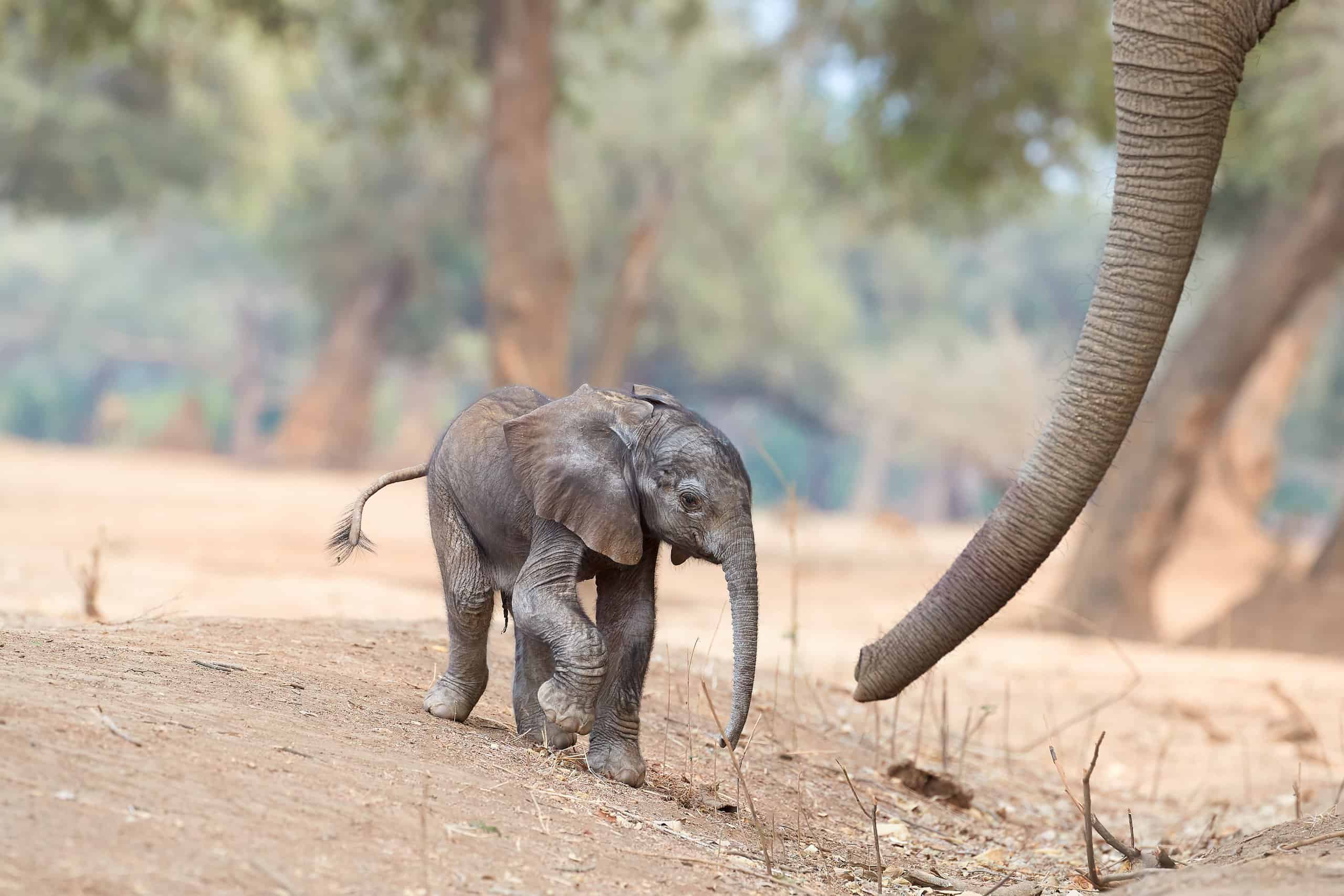
Elephants are known for their incredible size and weight. The African elephant is the largest living land animal, with males weighing up to 15,000 pounds.
To put that into perspective, an average male human weighs only 180 pounds. In comparison, elephants are clearly massive creatures with a significant role to play in the ecosystems in which they live.
One interesting fact about elephants is that they can weigh up to nearly 200 pounds when they are born. This is an incredibly large size for a newborn animal, and it shows just how quickly elephants grow and develop. Elephants are also fascinating because they evolved over millions of years, with the earliest fossil remains dating back around four million years ago.
The weight of elephants is an important topic for scientists and researchers, as it provides insight into the health and behavior of these majestic animals. Understanding the size of elephants in different stages of life, from birth to adulthood, helps conservationists make informed decisions about their protection and management. For example, knowing the size of elephant mothers and their offspring can help protect them during birth and keep them safe from predators and other threats.
In this blog, we will explore the weight of elephants and its importance in the world of wildlife conservation. We will discuss the largest and smallest species of elephant, where elephants come from, and why their weight is crucial for their survival. By the end of this blog, you will have a better understanding of just how important elephant weight is, not just for elephants themselves, but for the communities that surround them as well.
African Elephant Weight
Average weight of African elephants
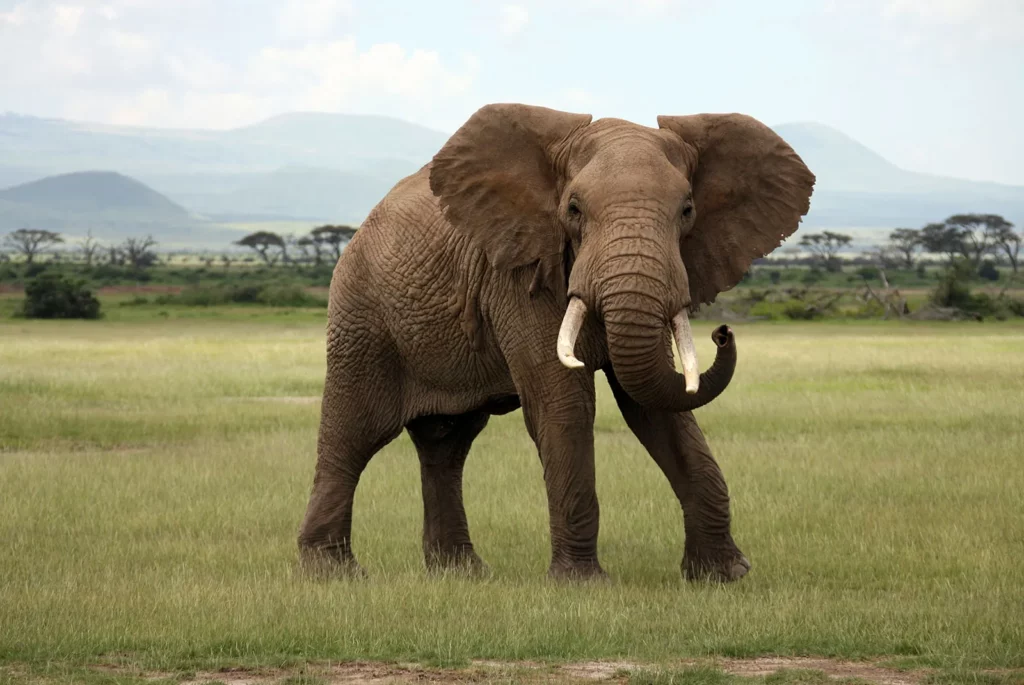
According to National Geographic, an average African elephant can weigh between 5000 to 14000 lbs (2268 to 6350 kg). However, the largest African elephant ever recorded weighed a massive 24000 lbs (11000 kg) and was found in Angola.
The World Wildlife Fund reports that an average weight of an African elephant is around 12000 lbs (5443 kg). Interestingly, even a baby African elephant can weigh between 200-300 lbs (90.7-136 kg) at birth.
Comparing to Asian elephants, which tend to be smaller than their African counterparts, they can weigh between 5000 and 11000 pounds (2268 and 4989 kilograms). Thus, African elephants are considered the largest living land animals on Earth.
Factors affecting African elephant weight
The weight of African elephants can be influenced by several factors. One obvious factor is their sex, as male elephants tend to be heavier than female elephants. The availability and quality of their food also impacted their weight as a lack of food can cause elephants to become underweight.
Age can also impact the weight of elephants. As elephants grow older, they tend to weigh more. Thus, adult elephants generally weigh more than young elephants.
In addition to these factors, environmental changes can also affect elephant weight. For instance, prolonged periods of drought can lead to fewer available food sources and cause elephants to lose weight.
To sum up, elephants are one of the most easily recognisable animals in the world and are true gentle giants. African elephants can weigh between 5000 and 14000 lbs while Asian elephants weigh between 5000 and 11000 lbs. Several factors affect elephant weight, such as sex, age, food availability, and environmental changes. Despite their massive size, elephants are remarkable animals and a vital part of the ecosystem.
Asian Elephant Weight
The average weight of Asian elephants
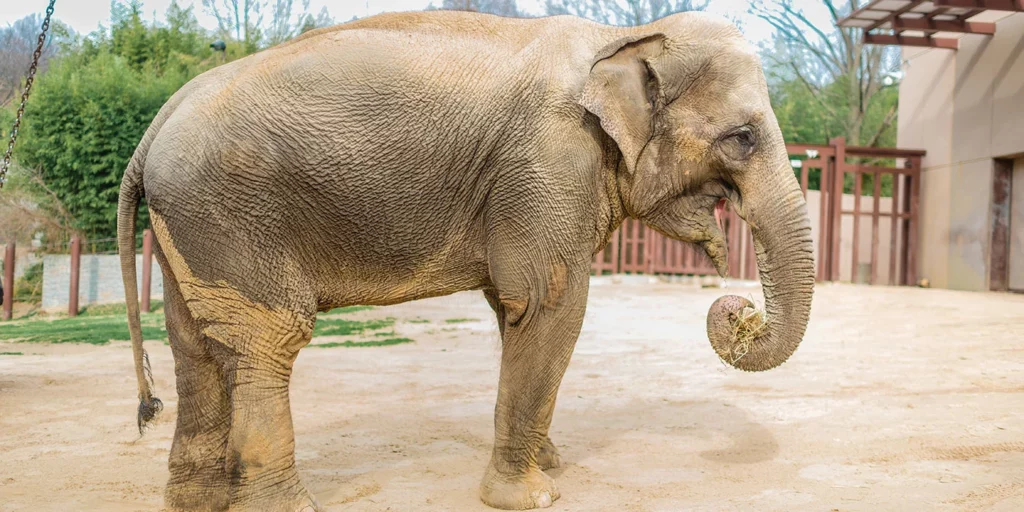
Asian elephants are slightly smaller than their African cousins and typically weigh between 6000 and 12000 pounds (2750 and 5420 kilograms). They stand 6 to 12 feet (1.8 to 3.8 meters) tall at the shoulder. Their skin is typically gray, but parts may lack color, especially around the ears, forehead, and trunk. Interestingly enough, even a baby Asian elephant can weigh between 200-300 lbs at birth.
Comparing the weight of Asian elephants to African elephants, the former tend to be smaller. African elephants are considered the largest living land animal on Earth.
Factors affecting Asian elephant weight
The weight of Asian elephants, like their African counterparts, can be influenced by various factors. Their sex, food availability, age, and environmental changes are some of the things that can impact their weight.
In terms of sex, male Asian elephants are generally heavier than female Asian elephants. The availability and quality of food resources also impact their weight significantly. A lack of food sources can cause elephants to become underweight and affect their overall health.
Age is another factor that can lead to a variation in elephant weight. As Asian elephants age and grow, they tend to weigh more. This factor is particularly relevant when comparing the weight of adult elephants to that of young elephants.
Like African elephants, environmental changes, such as droughts, can affect the availability of food resources and the weight of Asian elephants.
In conclusion, Asian elephants are fascinating animals that share many similarities with their African counterparts. They are slightly smaller than African elephants, weigh between 6000 and 12000 pounds, and stand between 6 to 12 feet tall at the shoulder. Various factors, such as age, sex, food availability, and environmental changes, can influence their weight. Despite being smaller, Asian elephants are impressive animals and play a crucial role in maintaining the balance of their ecosystems.
Baby Elephant Weight
The average weight of baby elephants
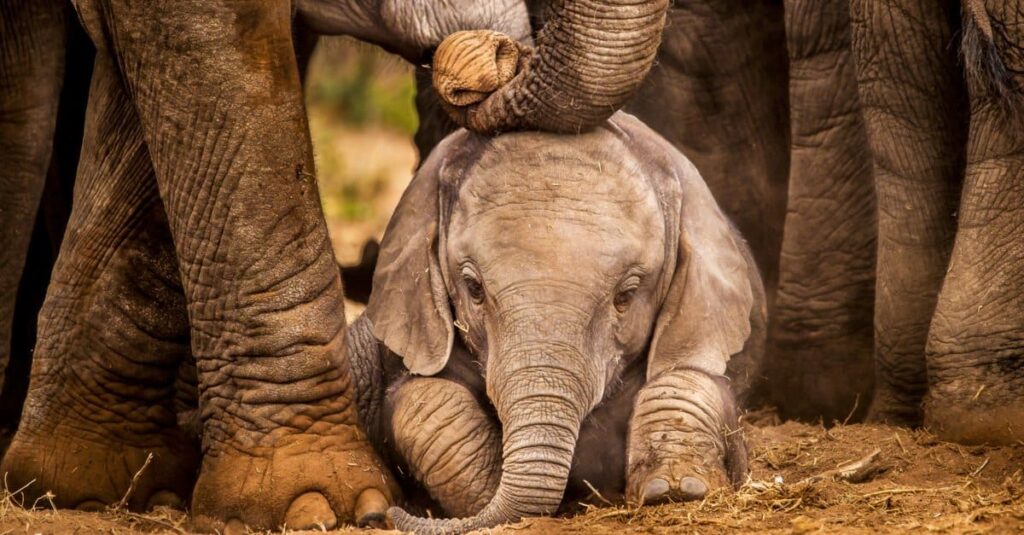
At birth, baby elephants, both African and Asian, are already quite large compared to other mammal species. The average weight of a baby elephant is around 120 kg (264 lb.). However, male African elephant calves may weigh up to 165 kg (364 lb.) at birth while Asian elephant calves weigh about 91 kg (200 lb.). On average, newborn calves stand about 1 m (3 ft.) high.
As they grow older, baby elephants gain weight rapidly. Calves are not completely weaned until they are over two years of age and may weigh between 850-900 kg (1874-1984 lb.) by then. The birth interval for elephants is about a year, and females may have up to 12 calves in their lifetime.
Importance of monitoring baby elephant weight
Monitoring baby elephant weight is essential in ensuring their health and survival. A baby elephant’s weight can indicate if it is receiving proper nutrition and care from its mother. If a calf is underweight, it may not be getting enough milk or may be sick, which can lead to health complications or even death.
Moreover, monitoring the weight of baby elephants allows researchers and conservationists to study the overall health and well-being of elephant populations. By observing changes in weight and growth rates, conservationists can identify potential problems and implement management strategies to address them.
In conclusion, baby elephants are born weighing around 120 kg (264 lb.) and grow rapidly as they reach adulthood. Monitoring their weight is crucial in ensuring their health and survival, and also provides valuable insights for conservation efforts.
Largest Elephant on Record
The heaviest elephant ever recorded
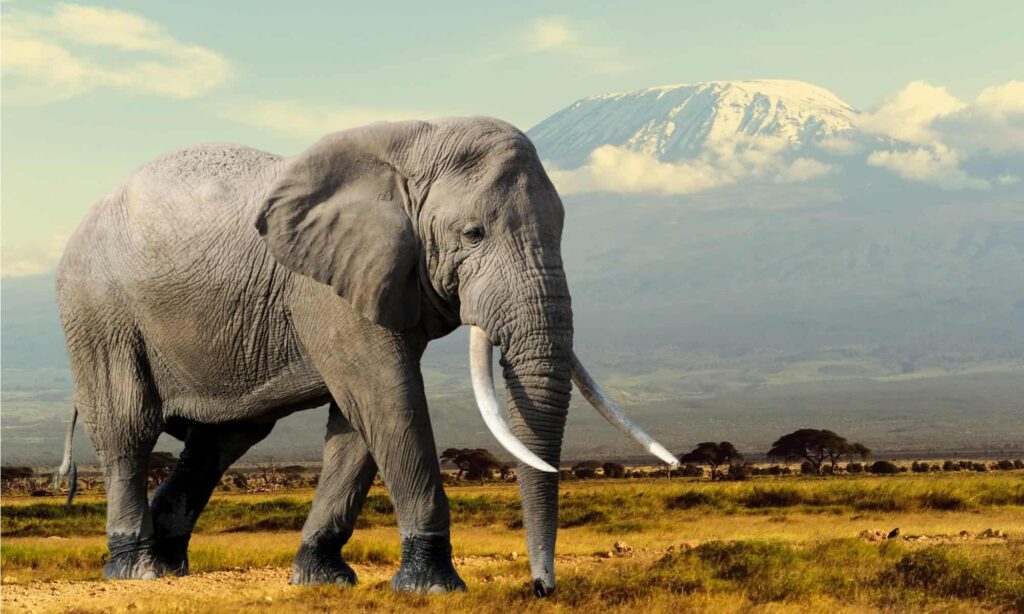
The largest elephant on record was an adult male African savanna elephant that weighed about 24000 pounds (10886 kilograms) and was 13 feet (3.96 meters) tall at the shoulder. This elephant was named “Kraig” and lived in Zimbabwe in the 1980s.
Kraig’s enormous size was due to a combination of genetics, environment, and nutrition. He lived in an area where food was abundant and was also given extra supplements to enhance his growth. However, it’s important to note that most elephants don’t reach this size. African elephants are generally larger than Asian elephants, with males weighing up to 15000 pounds (6800 kilograms) and females up to 8000 pounds (3600 kilograms).
Details about this record-breaking elephant
Kraig was discovered in Zimbabwe in the 1980s during a wildlife survey. His size was so impressive that he was identified by researchers as the largest elephant on record. He was estimated to be about 40 years old at the time.
Kraig’s tusks were also noteworthy, measuring about 10 feet (3 meters) in length each. Unfortunately, Kraig was later killed by poachers for his ivory tusks, which highlights the continued threat facing elephant populations.
Elephants are an important part of many ecosystems, and their survival is crucial for maintaining biodiversity. They are also intelligent and social animals that contribute to the cultural and ecological well-being of many communities.
In conclusion, while Kraig the elephant holds the record for being the heaviest elephant ever recorded, it’s important to recognize that most elephants don’t reach this size. Elephants are vital to many ecosystems and their survival is threatened by issues such as poaching and habitat loss. Protecting these magnificent animals is crucial for the health of our planet and the well-being of our communities.
Comparisons to Other Animals
How an elephant’s weight compares to other animals
Elephants are the largest land animals in the world, weighing in at an average of 5443 kg (12000 lb.), which is more than any other terrestrial creature. They far outweigh the next largest land mammal, the rhinoceros, by over four times. Even the largest dinosaur, the Argentinosaurus, weighed an estimated 100,000kg, which is less than twenty times the weight of the average elephant.
Compared to other mammals, such as whales and some species of dinosaurs, elephants are not as massive. The Blue Whale, which is the largest animal that ever existed, has been recorded at a whopping 173 metric tonnes (191,000 lb.). In comparison, the largest elephant on record weighed around 24,000 lb.
Fascinating facts about the size and weight of elephants
Elephants are not only the heaviest creatures on land but also have unique body characteristics and abilities that make them fascinating. Here are some fascinating facts about the size and weight of elephants:
– The average height of an African elephant is 3.3 m (11 ft.) at the shoulder, with males being the tallest.
– The ears of elephants are used for hearing and help regulate the animal’s temperature. The African elephant’s ears are much larger than the Asian elephant’s, and they can use them to fan themselves.
– Elephants have a large head with powerful muscles, which they use to push down trees and grab food.
– An elephant’s trunk is a long, flexible nose used for breathing, smelling, drinking, and grabbing objects.
– Elephants have thick, gray skin that can be up to 4 cm (1.6 in) thick, protecting them from predators and the sun.
– Their tusks are elongated incisors that protrude from their upper jaw, and they can weigh up to 100 lb. Both male and female African elephants have tusks, while only males of the Asian elephant species have them.
In conclusion, elephants are remarkable creatures that stand out among other animals due to their size and unique characteristics. They are the largest land animal, weighing more than any other terrestrial creature, with the exception of some dinosaurs, and are equipped with various physical traits, such as their large ears and powerful trunks, that allow them to survive in their habitat.
Weighing Elephants
Methods for weighing elephants
Considering their massive size and weight, weighing elephants is not easy. There are several methods used to weigh these animals, including:
– Placing an object of known mass a fixed distance away from the elephant and measuring the gravitational attraction the elephant exerts on the object. This allows for computing the elephant’s mass and weight accurately.
– Cutting the elephant into pieces and weighing each piece by putting it in a tank of water. The bloody stuff is weighed by putting it in a bag with negligible weight and then putting it in a tank of water. All the weights are added up to calculate the elephant’s mass and weight.
– Utilizing scales designed specifically for weighing large animals such as elephants, or utilizing cranes and large cages to support the animal’s weight while being weighed.
Challenges in accurately weighing these massive animals
Accurately weighing elephants presents several challenges due to their size and behavior. The main challenges include:
– Elephants are wild animals, which makes it difficult to capture and transport them to areas where they can be weighed.
– The safety of both the elephant and the team responsible for weighing it must be taken into account when deciding on the best method for weighing.
– The weight of an elephant can vary based on several factors, including age, gender, and diet, making it critical to obtain accurate measurements to gain a better understanding of the animal’s condition and needs.
Despite these challenges, an accurate weight measurement for an elephant is critical for managing their health, as it helps to determine appropriate feeding plans and medication dosing.
In conclusion, weighing elephants is no easy task due to their unique characteristics, massive size, and behavior. However, several methods have been developed to ensure that accurate measurements are obtained, which help to manage their health effectively.
Elephant Weight in Conservation
How Knowing an Elephant’s Weight Helps with Conservation Efforts
Elephant weight and body composition play an important role in conservation efforts. Researchers are studying the weight of elephants to inform zoo management practices and better understand elephants’ health in the wild.
In zoos, elephants are facing a fertility crisis that may be related to changes in their diets and body composition. By understanding the body composition of elephants, zookeepers can adjust their diets and living accommodations to suit their health needs better. In the wild, knowing the weight of elephants helps researchers understand their overall health and reproductive capabilities.
Additionally, elephant weight can be a factor in understanding elephant behavior. Heavier males may have a greater chance of establishing dominance, while lighter elephants may be more prone to disease or predation.
The Role of Elephant Weight in Managing Populations
Understanding the weight of elephants is crucial in managing populations. In some cases, conservation efforts require the relocation of elephants to other habitats. If elephants are underweight or malnourished, they may not be able to survive the move. By monitoring elephant weight and body composition, conservationists can ensure that any relocation efforts are sustainable for the elephants’ health.
Recap of Key Takeaways about Elephant Weight and Its Importance
– Elephant weight and body composition are important factors in conservation efforts.
– Understanding the body composition of elephants is crucial for their health and well-being in zoos and in the wild.
– Elephant weight can be a factor in understanding their behavior and dominance in the herd.
– Monitoring elephant weight is crucial in managing populations and ensuring their survival.
Final Thoughts on the Weight of These Majestic Creatures
The weight of elephants is a testament to their strength, survival skills, and complex nature. With their weight shaping the world around them, their tracks are left as marks of their passage and their presence affects the biodiversity of their habitat.
Conservation efforts need to carefully consider elephant weight and body composition to ensure the long-term survival of these majestic creatures. By understanding the health and behavior of elephants, researchers and conservationists can make informed decisions that promote their preservation and well-being.

